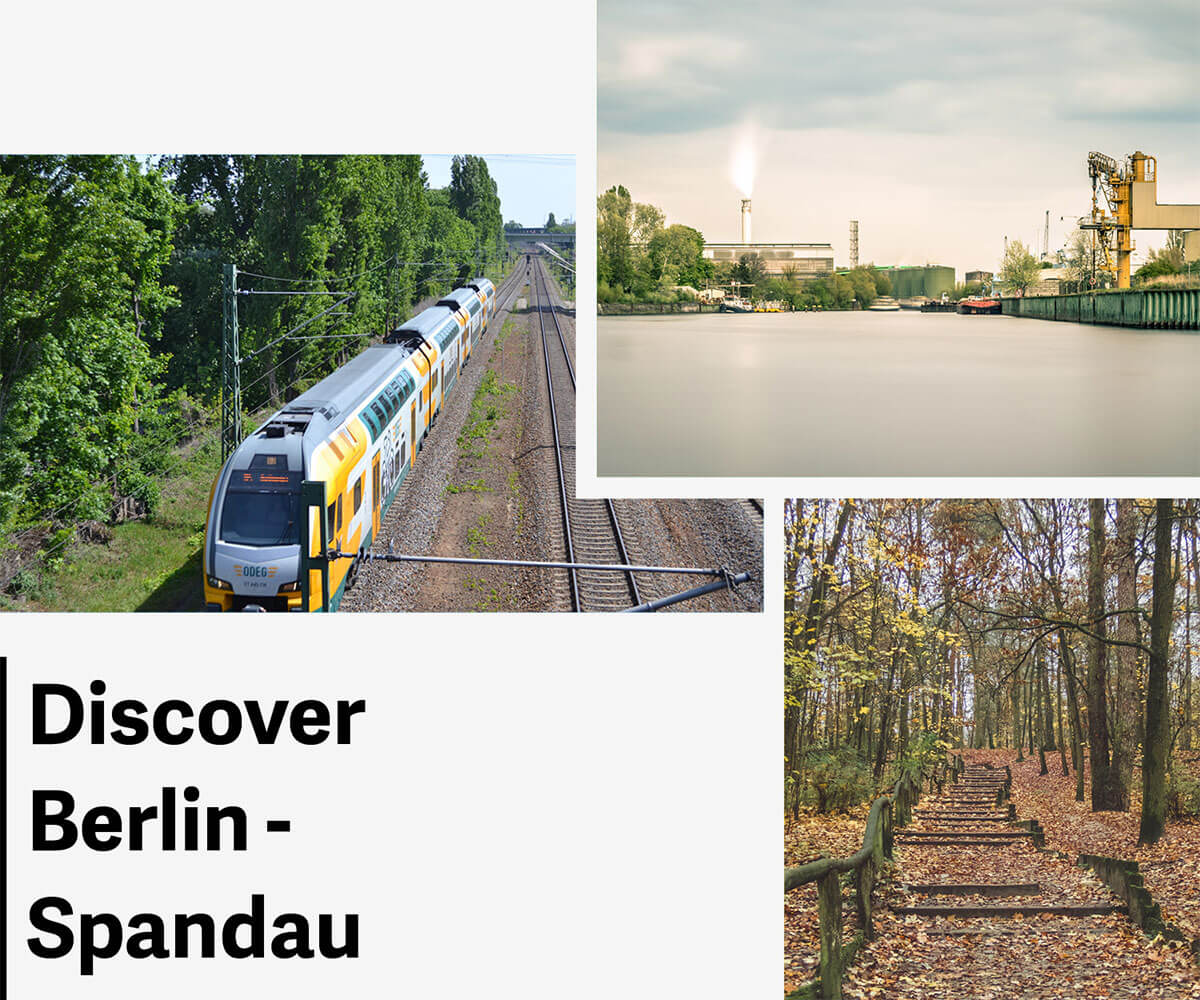Discover Berlin - Spandau
 Spandau is separated from the rest of Berlin by the Havel river, resulting in a unique feeling: the Spandauers are local patriots. This pride is well-founded as the center of the old town of Spandau (the Kolk) is more senior than Berlin.
Spandau is separated from the rest of Berlin by the Havel river, resulting in a unique feeling: the Spandauers are local patriots. This pride is well-founded as the center of the old town of Spandau (the Kolk) is more senior than Berlin.
The lively old town is characterized by small stores, department stores, and restaurants and has the largest pedestrian zone in Berlin.
Spandau offers swimmers, paddlers, and cyclists a world of water at their front door. The water quality is excellent. Sports enthusiasts and landscape lovers will find everything they need by walking and cycling along the Havel, dangling their legs in the water here and there, and exploring a piece of history on their tour northwards: an old GDR border watchtower. The district of Spandau is one of the most western in Berlin and has nine localities.
Localities of Spandau: Falkenhagener Feld, Gatow, Hakenfelde, Haselhorst, Kladow, Siemensstadt, Staaken, Spandau, Wilhelmstadt
There is a lot of history to discover in one of the largest districts of Berlin. Founded as early as the 13th century as a medieval fortress town, Spandau has experienced many things through the ages – the traces are everywhere. The most imposing testimony is the early Renaissance Zitadelle Berlin (Citadel), which conceals exciting treasures behind its four-meter-thick walls and a destination for some 10,000 bats that hibernate here every winter.
Just a few steps further on, you are among the quaint cobbled streets and alleyways of the Kolk quarter, the oldest part of Spandau. The district also has a long tradition as a center of industrial production. On Eiswerder Island, the former production halls of the Royal Fireworks Laboratory are a reminder of its explosive past. The history of the world’s largest electrical company began in the Siemensstadt district.
Spandau borders the Berlin districts of Berlin/Reinickendorf, Berlin/Charlottenburg-Wilmersdorf, Berlin/Steglitz-Zehlendorf, and the Brandenburg districts of Oberhavel and Havelland as well as the independent state capital Potsdam.
Spandau is diverse. It ranges from the typical Berlin apartment buildings in Siemensstadt and the large housing estate Falkenhagener Feld to villas and single-family homes in an almost village-like atmosphere in Kladow and Gatow.
Thanks to the good transport connections, you can quickly reach the center of Berlin or the surrounding area. The U7 from Rudow runs via Siemensstadt and Haselhorst, as well as Altstadt Spandau to Rathaus Spandau. The S75 and S9 are extensions of the Stadtbahn and run to the Spandau long-distance train station.
Sights
- Zitadelle Berlin (Citadel)
- Kulturhaus Spandau
- Gotisches Haus
- Gartenstadt Staaken (one of the most critical urban architectural monuments of the 20th century)
- Siemensstadt (UNESCO World Heritage Site since 2008)
- Little Venice (Klein-Venedig)
- Fort Hahneberg (one of the last fortress buildings in the Prussian style in Germany)
- Gutspark Neukladow (idyllic country park)
- Garten Fraenkel (The listed country house garden is one of Spandau’s most beautiful public green spaces)
- Atelier Burgwallschanze (small cultural center which is available to artists as a workshop and venue for events)
- Kladower Hafen (Waterfront and ferry pier)
- Gatower Windmühle (historic windmill hill from 1845, the trestle windmill is fully functional)

By
Juli Buchanan
Hi there! I'm Juli, I have german roots but I grew up in New Zealand and have been living in Germany since 2004. I love sharing my passion for Berlin and all it has to offer with new 'Berliners' and through my work as a freelance Relocation Consultant with IRC I have the opportunity to do so.

Let's speak
